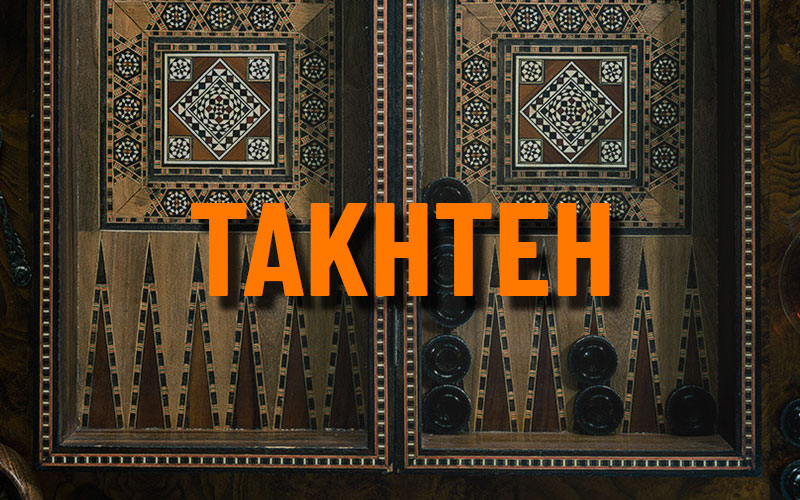
Takhteh (also spelled "Takhte") is the Persian name for backgammon. The rules are similar but not exactly the same as Western backgammon. A list of the differences appears at the bottom of this page. The same game is called Tavla in Turkey.
Setup
The setup and movement are the same as in regular backgammon. Each player starts with two checkers on the opponent's one-point, five checkers on the opponent's twelve-point, three checkers on their own eight-point, and five checkers on their own six point. Object: The object of the game is to move all of your checkers into your own home board and then bear them off. The first player to bear off all his checkers wins the game.
To start
Each player rolls one die and the higher number goes first. That player then rolls the dice again to begin his first turn. After the first game, the winner of the previous game goes first.
Movement
The roll of the dice indicates how many points, or pips, the player is to move his checkers. The following rules apply:
- A checker may be moved only to an open point, one that is not occupied by two or more opposing checkers.
- The numbers on the two dice constitute separate moves. For example, if a player rolls 5 and 3, he may move one checker five spaces to an open point and another checker three spaces to an open point, or he may move the one checker a total of eight spaces to an open point, but only if the intermediate point (either three or five spaces from the starting point) is also open.
- Doubles are played twice. For example, a roll of 6-6 means the player has four sixes to use.
- You must use both numbers of a roll if possible, or all four numbers in the case of doubles.
Hitting
A checker sitting alone on a point is called a blot. If an opposing checker lands on a blot, the blot is hit and placed on the bar.
You may not run for cover after hitting an opposing blot in your own home board. If you choose to hit within your home board, you must cover the hitting checker with another of your own checkers or leave it exposed.
Entering from the bar
Any time you have one or more checkers on the bar, your first obligation is to enter those checker(s) into the opposing home board. You enter a checker by moving it to an open point corresponding to one of the numbers on the rolled dice. If you are able to enter some but not all of your checkers, you must enter as many as you can then give up the remainder of your turn.
Bearing Off
Once you have moved all fifteen of your checkers into your home board, you may begin bearing off. You bear off rolling a number that corresponds to the point on which the checker resides, and then removing that checker from the board.
If there is no checker on the point indicated by the roll, then you must make a legal move using a checker on a higher-numbered point. If there are no checkers on higher-numbered points, you are permitted to remove a checker from the highest point that has one.
You may not unnecessarily "waste pips" during bearoff. This means you should always bear off a checker where possible rather than use a smaller number to move that checker forward.
White must use the 5 to bear off the checker on the three-point. He may not play the 2 first, for that would waste pips.
If a checker is hit during bearoff, it must be reentered and returned to the player's finishing table before that player can resume bearing off his checkers.
Scoring
The first player to bear off all fifteen checkers wins the game. If the losing player has borne off at least one checker, he loses only one point. If the losing player has not borne off any checkers, he loses two points.
Differences from Backgammon
- The winner of the opening roll rerolls for his first turn.
- There is no "hit-and-run" in the player's home board.
- You may not unnecessarily waste pips during bearoff.
- The winner scores one point for a normal win and two points for a gammon. There is no backgammon.
- There is no doubling cube.